Machu Picchu, the ancient Inca citadel, is a marvel that continues to captivate the world. Nestled high in the Andes Mountains of Peru, it’s a testament to the ingenuity and resilience of its builders. But how high is Machu Picchu?
The answer is approximately 2,430 meters, or 7,970 feet above sea level. This elevation gives Machu Picchu its breathtaking views and unique climate. It’s a height that adds to the allure of this UNESCO World Heritage Site, drawing in countless visitors each year.
But the height of Andean Machu Picchu is just one aspect of its appeal. The best time to visit this Andean wonder is another factor that can enhance your experience. The dry season, from May to October, is often recommended. Yet, the wet season, from November to April, holds its own charm despite the rainfall.
The ancient builders of Machu Picchu, the Inca civilization, left an indelible mark on this landscape. Their architectural prowess, evident in the site’s intricate stonework, continues to inspire awe. The purpose of Machu Picchu, however, remains shrouded in mystery, adding to its intrigue.
Whether you’re a travel blogger seeking captivating content or an outdoor adventure guide looking to enrich your knowledge, Machu Picchu offers a wealth of inspiration. Its scenic landscapes, rich history, and unique climate make it a destination worth exploring.
In this comprehensive guide, we’ll delve into the height of Machu Picchu, the best times to visit, and the legacy of its ancient builders. We’ll also explore the hiking trails leading to the site, the conservation efforts in place, and the surrounding attractions.
Join us as we unveil the wonders of Machu Picchu. Let’s embark on a journey that takes us high into the Andes, back in time to the era of the Incas, and deep into the heart of Peru’s most iconic landmark.
Prepare to be captivated by the majesty of Machu Picchu. Its height, its history, and its enduring allure await.
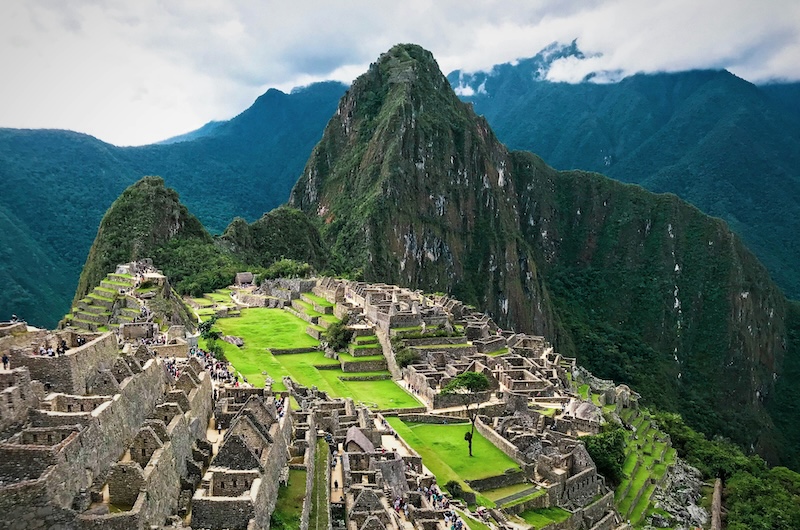
Machu Picchu elevation is not just a number on an altimeter. It’s a defining feature that contributes to its mystique and allure. Perched at approximately 2,430 meters (7,970 feet), this archaeological wonder dominates the cloud forests of the Andes.
To visit Machu Picchu is to stand among the clouds, gazing down at the Urubamba River winding through the sacred valley below. This lofty elevation offers stunning vistas that shift with the seasons, turning the landscape into a living painting.
The elevation and climate were no doubt crucial in the Incas’ choice of location. High in the Andes, Machu Picchu was insulated from the sprawling Spanish Conquest below. Its altitude rendered it invisible from the base of the mountains, preserving it for generations to come.
It’s not just about altitude; it’s about its strategic positioning. The surrounding peaks work as natural sentinels, guarding the site against would-be invaders. The Incas understood the environment well enough to harness it for their architectural ambitions.
Standing at such elevation also influences the cultural experience of visitors. The thinning air adds a unique challenge, requiring preparation and acclimation for those unaccustomed to high altitudes.
Interestingly, the height serves both as an obstacle and an attraction, complicating access but enhancing the sense of achievement once reached. The dramatic elevation accentuates Machu Picchu’s many photographic landscapes, making it a paradise for photographers.
Located in the Andes Mountains of Peru, Machu Picchu is a crown jewel of this dramatic range. The Andes are the longest continental mountain range in the world, and Machu Picchu is one of its most iconic landmarks.
Its location is not just geographically significant but also culturally crucial. The Andean peaks around Machu Picchu were considered sacred by the Incas. They believed these mountains were homes to gods, further elevating Machu Picchu’s spiritual significance.
Nestled between the towering peaks of Machu Picchu Mountain and Huayna Picchu, the citadel seems to float amidst the clouds. This setting is more than idyllic; it’s deliberately chosen. The Incas’ decision reflects their deep relationship with their environment.
The surrounding area forms part of Peru’s lush cloud forest region. This is a space teeming with biodiversity, adding layers of interest for nature lovers. Wildlife and plants native to this region thrive at these heights, adding to the site’s allure.
The Machu Picchu Historical Sanctuary encompasses both natural and cultural attractions, reflecting the Incas’ mastery in selecting sites with multifaceted significance. Visitors walking these grounds experience a deep sense of the sacred and monumental.
Understanding the height of Machu Picchu involves more than numbers on a map. The site itself features multiple elevations, each integral to its layout. The main ruins site stands at approximately 2,430 meters. Surrounding peaks, however, can reach even higher elevations.
Huayna Picchu, a popular hike, towers above the citadel at about 2,720 meters (8,920 feet). This ascent rewards trekkers with unparalleled views of the ruins and the valley below. It illustrates just how varied the elevations around Machu Picchu can be.
Machu Picchu Mountain, another favorite trek, presents an even taller viewpoint. At around 3,050 meters (10,000 feet), it offers sweeping vistas that redefine the majesty of the Andes. Each viewpoint provides a different perspective on the ancient wonder.
Measuring Machu Picchu’s height means appreciating these varied elevations and understanding how they contribute to the site’s unique atmosphere. The interplay of these heights shapes the microclimate and biodiversity of the sanctuary.
For those planning to visit, these heights might mean layering up for cooler temperatures. It’s about more than just surviving the elevation; it’s about thriving in this high-altitude haven.
Each step taken at these heights is a reminder of the Incas’ architectural and engineering excellence, their brilliance enshrined in stone and terrain. The heights offer a feast for the senses and a direct connection to the ingenuity of an ancient civilization.
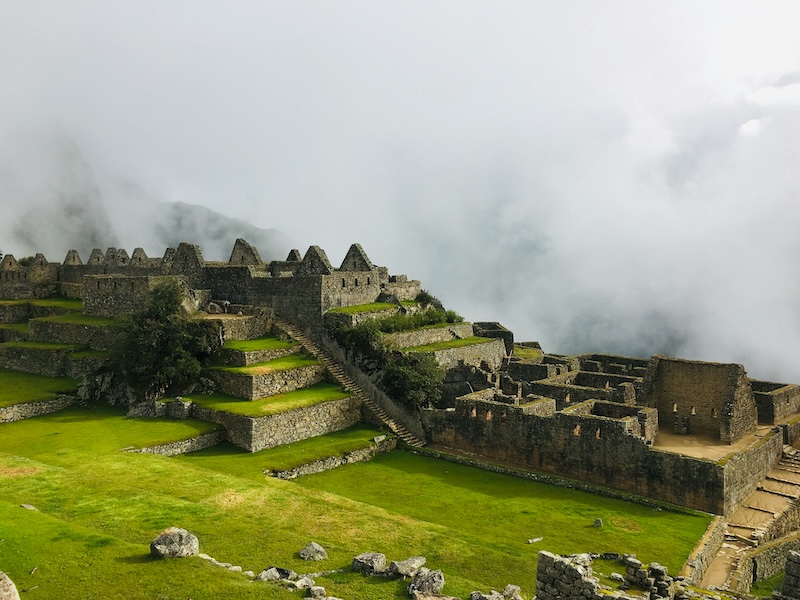
Choosing when to visit Machu Picchu significantly shapes the experience. The site has distinct seasons, each offering a unique perspective on the ancient ruins. Understanding these variations can help determine the optimal time for your adventure.
Factors like weather, crowd levels, and personal preferences all influence this decision. While some seek sunlit paths and crystal-clear skies, others appreciate the tranquility of a less crowded visit.
The journey to Machu Picchu is about more than traversing terrain; it’s about connecting with the Inca heritage. Experiencing their legacy can be affected by seasonal changes.
The dry season, from May to October, is the most popular period. During this time, rainfall is minimal, and the trails are manageable. This season welcomes the majority of tourists, drawn by stable weather and stunning views.
In contrast, the wet season from November to April sees fewer visitors due to increased rain. However, those who brave the rain are often rewarded with vibrant greenery and lush landscapes.
The dry season is synonymous with azure skies and sunshine. It’s no wonder this period attracts the most visitors. The absence of rain means better hiking conditions and clearer views of Machu Picchu and its surroundings.
May to September are the busiest months, particularly June through August. During this time, the temperatures are cooler, making trekking more comfortable. The vibrant festivals in Cusco also attract travelers around this time, adding cultural richness to the journey.
Hiking the Inca Trail is particularly rewarding in these months. The trail is clear, and the scenery is breathtaking. Rain gear becomes less of a necessity, allowing for lighter packs and more carefree exploration.
However, this season also means more tourists. Ensuring tickets and accommodations are booked well in advance is wise. Despite the crowds, the serene majesty of Machu Picchu remains undiminished.
Photographers will delight in the quality of light, with clear air offering striking contrasts and the chance for exceptional images. Whether capturing sunrise over the citadel or the peaks, these months offer unparalleled opportunities.
The wet season introduces a different mood to Machu Picchu. As rain clouds weave through the valley, the lushness of the surroundings intensifies. This weather paints the ruins in a palette of greens, offering a fresh perspective.
Fewer tourists venture to the site during these months, providing a quieter and more personal experience. Even with the likelihood of showers, some adventurers find this solitude highly rewarding.
The rains transform the landscape into a lush paradise. Rivers swell, waterfalls cascade, and flora flourishes. The vibrant hues make for picturesque settings, albeit with a bit of cloud cover.
Travelers should prepare with waterproof clothing. The occasional downpour can strike unexpectedly, though there are usually dry spells each day.
While the Inca Trail experiences seasonal closures in February, alternative routes remain accessible. The Salkantay Trek offers a fantastic adventure through diverse ecosystems, even in wetter conditions.
Those who embrace the wet season can experience a different face of Machu Picchu. The clouds and mist lend an ethereal quality, making visits feel all the more mystical.

Machu Picchu stands as a testament to the Inca civilization’s architectural genius. This lost city is more than just stone and earth; it’s a glimpse into a sophisticated society. The complex embodies their engineering prowess, cultural richness, and spiritual depth.
The Incas crafted Machu Picchu around 1450 AD. Their ability to sculpt the Andean landscape speaks to their advanced skills and understanding of their environment. This site isn’t merely constructed; it’s a harmony between nature and the built environment.
Their stonework is legendary, using techniques like “ashlar” where stones fit perfectly without mortar. This precision not only showcases aesthetic beauty but also durability. Machu Picchu has withstood centuries, defying earthquakes and weather alike.
The urban sector of Machu Picchu reveals their social structure, with areas for nobility and commoners. Temples and ritual sites highlight their spiritual beliefs and practices. Ceremonial stones like Intihuatana indicate their astronomical knowledge.
The Inca’s agricultural sector is another marvel. Terraces carved into the mountainside not only supported crops but prevented erosion. This strategic use of land underscores their innovative agricultural strategies.
Despite the Spanish never finding Machu Picchu, rediscovery in 1911 by Hiram Bingham brought global attention. The site’s preservation owes much to this hidden history. Being declared a UNESCO World Heritage Site in 1983 further underscores its global significance.
The Inca’s engineering ingenuity is exemplified in Machu Picchu’s design. They selected the site for its strategic and protective advantages. Perched on a mountain ridge, it was invisible from below, offering both seclusion and security.
Their construction methods are remarkable, given the lack of modern tools. Without iron or wheels, they transported massive stones and achieved impressive precision. Each stone was cut perfectly, creating joints so tight that even a blade can’t fit between them.
Their mastery extended to water management, with a sophisticated system of canals and drains. These channels ensured a reliable water supply and managed rain runoffs effectively, reflecting their understanding of environmental balance.
Machu Picchu’s layout reflects an intricate understanding of geometry and alignment with celestial bodies. Structures like the Temple of the Sun were precisely placed to harness sunlight during solstices, enhancing their ceremonial significance.
The terracing techniques used by the Incas are still relevant today. These terraces created microclimates that optimized agricultural yield. The integration of form and function in these terraces speaks to their environmental adaptability and sustainable practices.
One can see the intelligence in the Inca’s adaptation to seismic activity. Their building techniques enabled structures to endure earthquakes due to their interlocking stone structures. This resilience testifies to their profound architectural insight.
The site is a lasting reminder of the Inca’s respect for Pachamama, or Mother Earth. Its construction mirrors the surrounding mountains, showing a reverence for nature that resonates with today’s sustainable development ideals.
Despite extensive research, Machu Picchu’s true purpose remains shrouded in mystery. Scholars propose various theories, ranging from a royal estate to a religious site. The complexity of structures suggests a multifaceted role in Inca society.
One compelling theory posits Machu Picchu as a retreat for Inca nobility. It served as a luxurious haven from Cusco, offering rest and rejuvenation amid breathtaking views. This indicates its significance as a status symbol for the elite.
The site’s alignment with significant astronomical events suggests it was a spiritual hub. Structures like the Intihuatana stone functioned as ritual tools. The Incas possibly used them to mark celestial occurrences, underscoring their astronomical expertise.
Machu Picchu might have been a ceremonial center for offerings to the sun, moon, and mountains, considered deities by the Incas. This connection to their spiritual world adds depth to its aura and mystique.
There’s also evidence suggesting Machu Picchu as an educational center. The presence of workshops and communal spaces hints at learning and knowledge-sharing activities. This view sees Machu Picchu as a cradle for intellectual growth within the empire.
The site’s agricultural innovations might have supported this intellectual community. The terraces would have fed inhabitants while serving as a demonstration of advanced Inca farming techniques. This symbiosis of agriculture and academia enriches its narrative.
In essence, Machu Picchu’s enigmatic nature continues to captivate explorers and historians alike. As new discoveries unfold, they may slowly unveil the secrets held by this Andean wonder, strengthening its legend in the process.
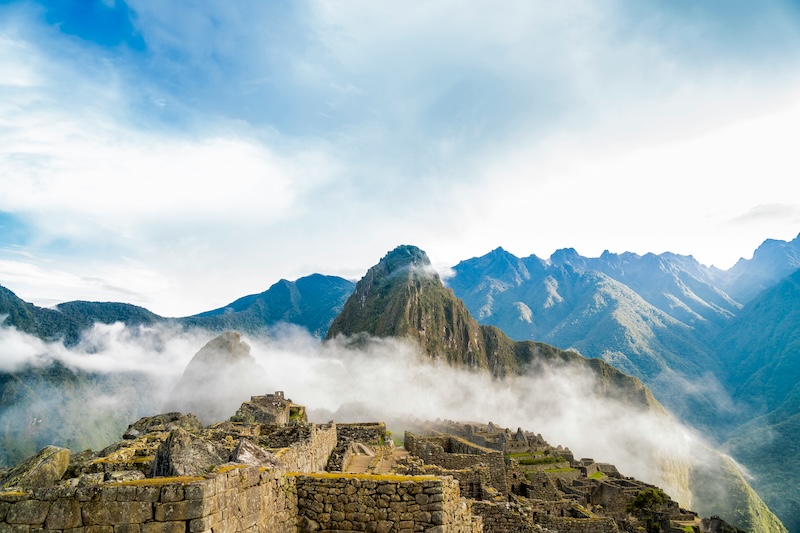
Reaching Machu Picchu is as much about the journey as the destination. The scenic trails offer a transformative experience, weaving through breathtaking landscapes. Wander through the Andes, where each step reveals history and nature intertwined.
Among the routes, the Inca Trail stands out for its historical significance and stunning vistas. But it’s not the only path to this ancient wonder. Adventurers can also choose alternative treks like the Salkantay or Lares, each with its unique charm.
The trails vary in duration and difficulty, catering to different experience levels. Whether seeking a rigorous challenge or a leisurely hike, each path provides unforgettable vistas. Each trail offers diverse flora and fauna, creating a dynamic journey to the past.
Travelers often prepare months in advance, especially for the popular routes. Permits are limited to preserve these historic paths. It ensures the experience remains unspoiled and steeped in the mystique of the ages.
Choosing the right trail involves considering personal interests and fitness. It’s crucial to weigh each trek’s distinct features before embarking. This careful planning promises a trek aligned with personal desires and abilities.
The Inca Trail is a bucket-list trek, unmatched in its historical allure. Following in the footsteps of the Incas, hikers traverse ancient stone paths. Towering mountains, mist-laden forests, and captivating ruins punctuate the journey.
This trail spans about 26 miles and typically takes four days to complete. Each day brings diverse terrain, from cloud forests to high-altitude passes. Machu Picchu awaits as the ultimate reward on this storied pilgrimage.
Hikers pass significant archaeological sites, offering glimpses into the Inca’s world. Explorers witness remains of fortresses and temples tucked into the hillsides. The trail culminates at the Sun Gate, with dawn revealing Machu Picchu’s splendor.
Permits for the trail are mandatory, with a limit of 500 people daily. This includes guides and porters, ensuring sustainable tourism. The trail’s popularity demands securing permits months ahead through authorized agencies.
Key attractions along the Inca Trail:
For those seeking lesser-trodden paths, Salkantay and Lares treks await. Both offer contrasting landscapes and tranquil solitude, far from crowded routes. These treks enrich the journey with cultural insights and raw beauty.
The Salkantay Trek traverses rugged terrains and reaches heights of 15,000 feet. It’s ideal for seasoned hikers desiring a challenging adventure. Snow-capped peaks and tropical forests make for a dramatically diverse trek.
The Lares Trek, on the other hand, unveils Andean culture and traditions. Hikers encounter local communities still connected to their ancestral roots. Traditional villages and hot springs mark this immersive cultural path.
Neither trek requires permits, offering more flexibility for last-minute plans. These routes can be customized to include activities or different paces. They cater to those drawn to nature’s purity and authenticity without the crowds.
Highlights of Salkantay and Lares Treks:
Embarking on any of these hikes ensures a memorable approach to Machu Picchu. Each route promises a fusion of challenge, history, and breathtaking vistas. Choose a path that aligns with your passion for adventure and discovery.
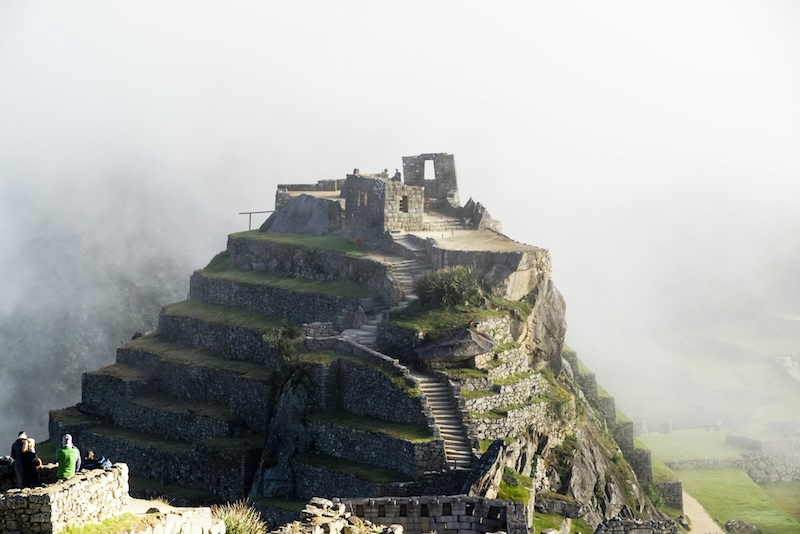
Machu Picchu’s grandeur attracts thousands yearly, necessitating strict visitor controls. These measures are crucial in safeguarding the fragile site from wear and tear. With heavy foot traffic, preservation becomes vital to maintaining its splendor.
To protect the ruins, daily visitor limits have been imposed. These restrictions ensure the site’s beauty and historical significance endure for future generations. Managing tourism responsibly is a delicate balancing act.
Conservation efforts focus on both the physical structures and the surrounding ecosystem. The lush biodiversity around Machu Picchu includes many rare species. Efforts extend to protecting these natural inhabitants from the impact of tourism.
The involvement of local communities is also pivotal. Residents participate in preservation initiatives, balancing economic benefits with conservation. This collaborative approach helps ensure Machu Picchu’s sustainable future.
Conservation strategies include:
Daily visitor caps are set to 2,500 entries, ensuring sustainability. Planning is crucial, with tickets often selling out weeks in advance. During peak seasons, securing tickets early is essential to guarantee entry.
Tickets are available in timed slots, spreading visitors throughout the day. This distribution helps prevent overcrowding at key times. It allows travelers a more serene experience amid the ruins.
Booking tickets includes choosing between several options. Options include general admission or access to specific trails like Huayna Picchu. Selecting the right ticket adds variety to the visit, depending on personal interests.
Keep in mind that once you arrive, ticket verification is strict. Bringing identification and ticket copies is necessary for site entry. Proper preparation ensures your visit goes smoothly and stress-free.
Sustainable tourism plays a critical role in preserving Machu Picchu’s legacy. It emphasizes minimizing tourist impact while enhancing cultural understanding. Engaging visitors in conservation fosters respect and awareness.
Education initiatives provide visitors with insights into preservation efforts. Guided tours often include overviews of sustainability strategies. These are designed to heighten awareness about conserving the site’s natural beauty.
Implementing sustainable tourism practices involves controlling physical and environmental impact. Measures like waste reduction and sustainable transportation options are prioritized. These initiatives help reduce the ecological footprint on the site.
Sustainability extends beyond environmental factors, including cultural preservation. Emphasizing local traditions and history elevates visitors’ appreciation. It enriches the travel experience while ensuring Machu Picchu’s cultural heritage remains intact.
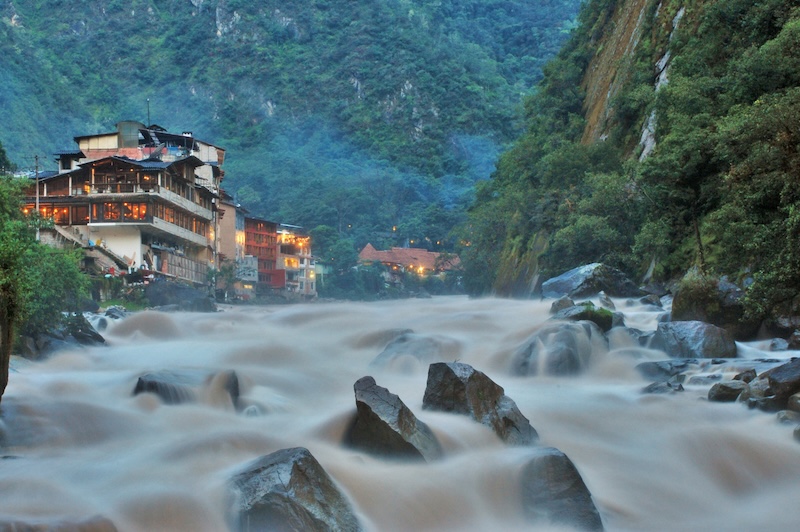
Nestled in the Andean highlands, Aguas Calientes serves as the bustling gateway to Machu Picchu. This picturesque town, officially called Machupicchu Pueblo, offers more than just proximity to the ancient wonder. It is an enchanting stop with unique experiences for all travelers.
Set along the Urubamba River, Aguas Calientes is vibrant with local culture and lush landscapes. Visitors find the town a charming place to acclimate before their Machu Picchu adventure. Its quaint streets are lined with artisanal shops and cozy eateries.
The town has grown with tourism but retains its quaint appeal. Visitors can explore hot springs, indulge in local cuisine, or relax before their journey. The laid-back atmosphere provides a perfect contrast to the grandeur of the ruins.
The town’s offerings extend beyond comfortable lodging and dining. There are many sites to explore that complement the Machu Picchu visit. Whether seeking history, nature, or culture, Aguas Calientes has attractions to enhance any itinerary.
Other attractions around Aguas Calientes include:
Aguas Calientes is often more than a simple stopover for many visitors. The town offers a blend of Andean charm and modern conveniences. Its narrow streets are filled with the lively sounds of local life.
Restaurants present delectable options, from traditional Peruvian cuisine to international dishes. Cafes and bars offer spaces to unwind after a day of exploring. The town’s culinary scene is a delightful surprise for many travelers.
Its local market is an engaging way to discover native crafts. Here, visitors find handmade goods and vibrant textiles, perfect for souvenirs. The market offers a glimpse into the area’s rich artisan traditions.
In Aguas Calientes, nature is never far. The verdant backdrop of lush green mountains creates a serene environment. For travelers seeking relaxation amidst stunning scenery, the town delivers abundant charm.
A visit to the Machu Picchu Museum and Botanical Garden adds depth to any itinerary. The museum offers insights into the history and significance of the ancient city. It showcases artifacts and exhibits that prepare visitors for their Machu Picchu exploration.
Adjacent to the museum, the Botanical Garden is a haven of native flora. Here, visitors can stroll through diverse plant species, learning about the region’s biodiversity. The garden highlights the natural beauty that surrounds Machu Picchu.
Both attractions provide context that enriches the understanding of the Inca world. They offer leisurely exploration, away from the crowds of the main site. Time spent here adds layers to the appreciation of Machu Picchu’s cultural legacy.
These sites emphasize the importance of conservation in maintaining cultural heritage. The museum and gardens serve as educational experiences for travelers. They inspire a deeper connection with the history and landscape of the Andean region.
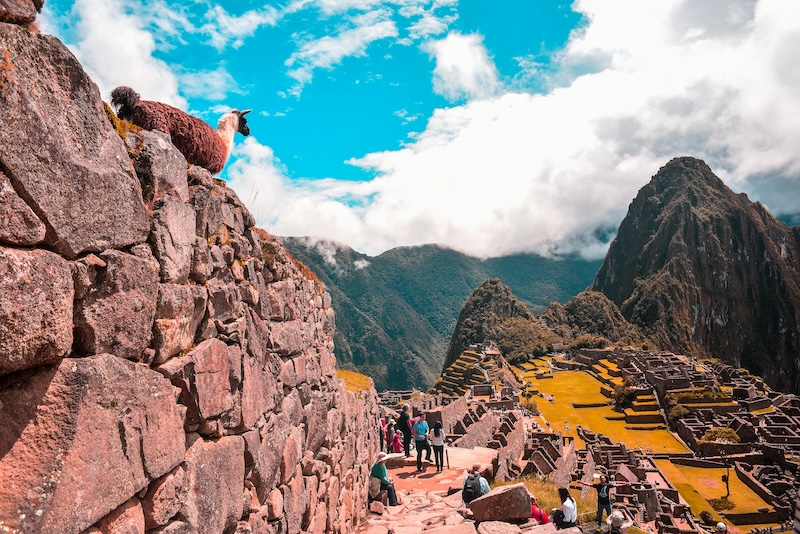
Machu Picchu, towering majestically in the Andean mountains, boasts a unique climate and rich biodiversity. This mixture of weather conditions and wildlife forms part of its allure. Understanding these elements aids in fully appreciating this iconic destination.
The climate varies, characterized by a tropical highland environment. Temperatures remain relatively steady year-round, though weather patterns shift with the seasons. Visitors should prepare for both wet and dry conditions depending on their travel dates.
Machu Picchu’s elevation influences its climate, leading to cooler temperatures at night. The days, typically warm, allow for pleasant exploration of the site. This microclimate contributes to the region’s diverse plant and animal life.
Nestled amidst the cloud forest, Machu Picchu supports varied ecosystems. Such biodiversity includes unique flora and fauna not found elsewhere. The site’s natural richness is as awe-inspiring as its architectural marvels.
Notable climate features include:
Weather in Machu Picchu shifts between two main seasons, influencing photographic opportunities. The dry season, from May to October, provides clear skies and ideal lighting conditions. This period is favored by photographers seeking to capture the site’s grandeur.
Despite more visitors in this season, the unobstructed views and stable weather conditions facilitate outstanding photography. Early morning and late afternoon offer the best light for capturing vibrant shots of the ruins.
The wet season, from November to April, presents a different set of challenges and benefits. Frequent rains often blanket the site, creating mystical scenes shrouded in mist. This ethereal atmosphere lends itself to dramatic, moody photographs.
Though less predictable, the wet season allows for unique compositions. Photographers may encounter fewer crowds, providing a sense of solitude. Capturing Machu Picchu enveloped in mist offers an evocative portrayal of its mystique and timelessness.
Machu Picchu’s location within a cloud forest contributes to its extraordinary biodiversity. The site is home to a remarkable array of plant and animal species. This ecological treasure trove enhances the visitor experience.
Lush vegetation surrounds Machu Picchu, with over 400 species of orchids alone. These colorful blossoms are a highlight for botany enthusiasts. The dense foliage offers shelter and sustenance for diverse wildlife.
Birdwatchers delight in spotting vibrant hummingbirds among the flora. These small creatures are ubiquitous in the area, adding a splash of color to the landscape. Larger inhabitants, like the endangered spectacled bear, may also be observed from a distance.
This rich biodiversity reflects the broader environmental significance of the region. The delicate balance of life at Machu Picchu underscores the importance of conservation. Efforts to protect these ecosystems ensure the persistence of Machu Picchu’s natural wonders for future generations to enjoy.
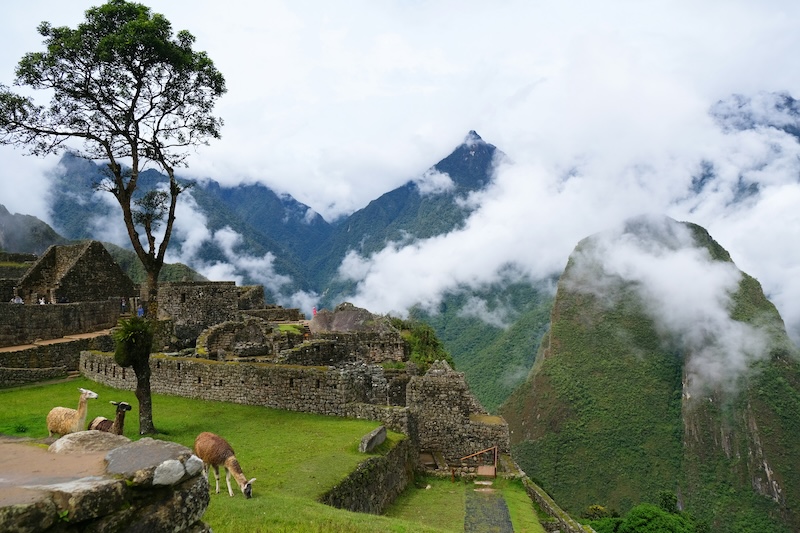
Machu Picchu stands as a testament to the Inca’s exceptional architectural skills. The site’s construction reflects their advanced understanding of engineering and aesthetics. Each structure was thoughtfully designed, harmonizing with the surrounding landscape.
The Incas employed an array of techniques that were both innovative and sustainable. Their craftsmanship can be seen in the precision with which stones were laid. This intricate stonework has withstood centuries, demonstrating remarkable durability.
Key architectural features of Machu Picchu include:
At the heart of Machu Picchu’s architectural wonders is the technique of “ashlar” masonry. This method involved shaping stones to fit together seamlessly without mortar. The precision of this stonework is a defining feature of Inca construction.
Each stone was meticulously cut and polished to achieve a snug fit. This not only enhanced the aesthetic appeal but also the strength of the structures. Despite the absence of modern tools, the Incas achieved an unparalleled level of craftsmanship.
This technique was not just about beauty; it served a practical purpose. The tightly fitted stones could withstand seismic activity common in the region. Their resistance to earthquakes illustrates the Incas’ deep understanding of natural forces.
Ashlar masonry remains an awe-inspiring aspect of Machu Picchu’s enduring architecture. It continues to captivate architects and engineers worldwide for its ingenious simplicity and durability.
Machu Picchu’s architecture was deeply intertwined with the spiritual beliefs of the Incas. The site housed numerous ceremonial locations and ritual stones, each with its significance. These constructions reveal the profound religiosity and astronomical knowledge of the Incas.
One of the most iconic is the Intihuatana stone, believed to have served as an astronomical clock. The name translates to “hitching post of the sun,” reflecting its celestial purpose. During solstices, the stone casts shadows that align with surrounding peaks.
The Temple of the Sun is another notable site, showcasing the Incas’ reverence for solar deities. Its curved walls and strategic location capture the light of the rising sun during important celestial events. This precision highlights the Incas’ sophisticated astronomical practices.
These ceremonial and ritual sites are more than just remnants of a bygone era. They offer insights into the spiritual and scientific achievements of the Incas. The careful alignment of structures with natural phenomena underscores their integrated worldview.
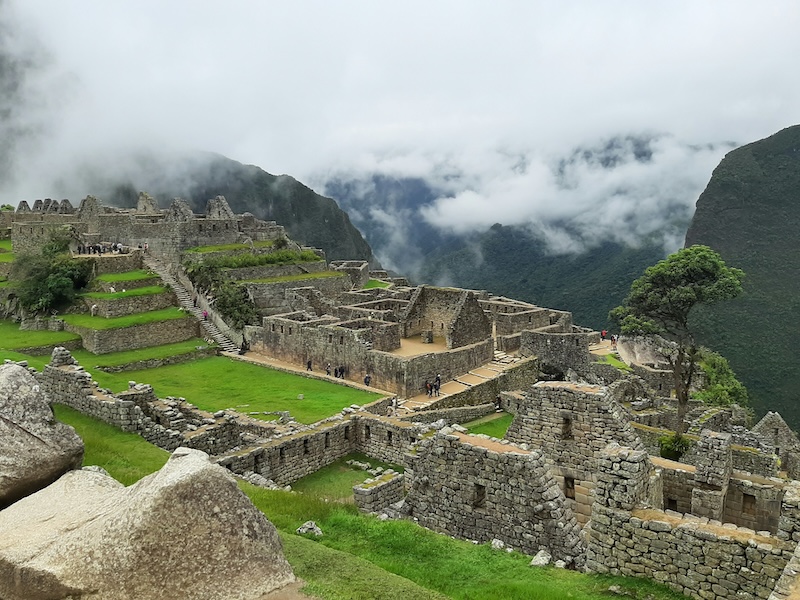
Machu Picchu captivates visitors, blending historical intrigue with natural splendor. Its architectural marvels reveal the ingenuity of the Inca civilization. Each stone and structure speaks volumes of their mastery and vision.
The grandeur of Machu Picchu transcends time, offering insights into the Inca world. Every visit is a journey not just to a place, but to a different era. Travelers leave with memories that linger, echoing the mountain’s silent tales.
Exploration of Machu Picchu is a timeless adventure. This Andean wonder stands resilient, inspiring wonder and curiosity for generations to come.
Visitors often have many questions about Machu Picchu. Key topics include its elevation, climate impacts, and visiting rules. Below, we address some of the most common inquiries. This will help prepare travelers for their journey.
Machu Picchu is perched at an impressive height. It stands about 2,430 meters, or 7,970 feet, above sea level. This elevation grants it stunning vistas and breathtaking landscapes.
The high elevation contributes to Machu Picchu’s unique climate. Days are warm and humid, while nights are typically cooler. Visitors should prepare for these temperature variations.
There are restrictions in place to preserve Machu Picchu. Visitor numbers are limited daily, and specific routes are designated. Tours and ticket purchases in advance are strongly recommended.
Yes, you can visit Machu Picchu without a guide, though guidance enhances the experience. Guides offer historical insights and detailed site understanding. Many travelers opt for guided tours to enrich their visit.
Check out our Manu Tours Peru:
If you got any questions, please do not hesitate to send us a message. We reply within 24 hours!
+51 900 394 399
info@biomanuexpeditions.com
reservas@biomanuexpeditions.com
